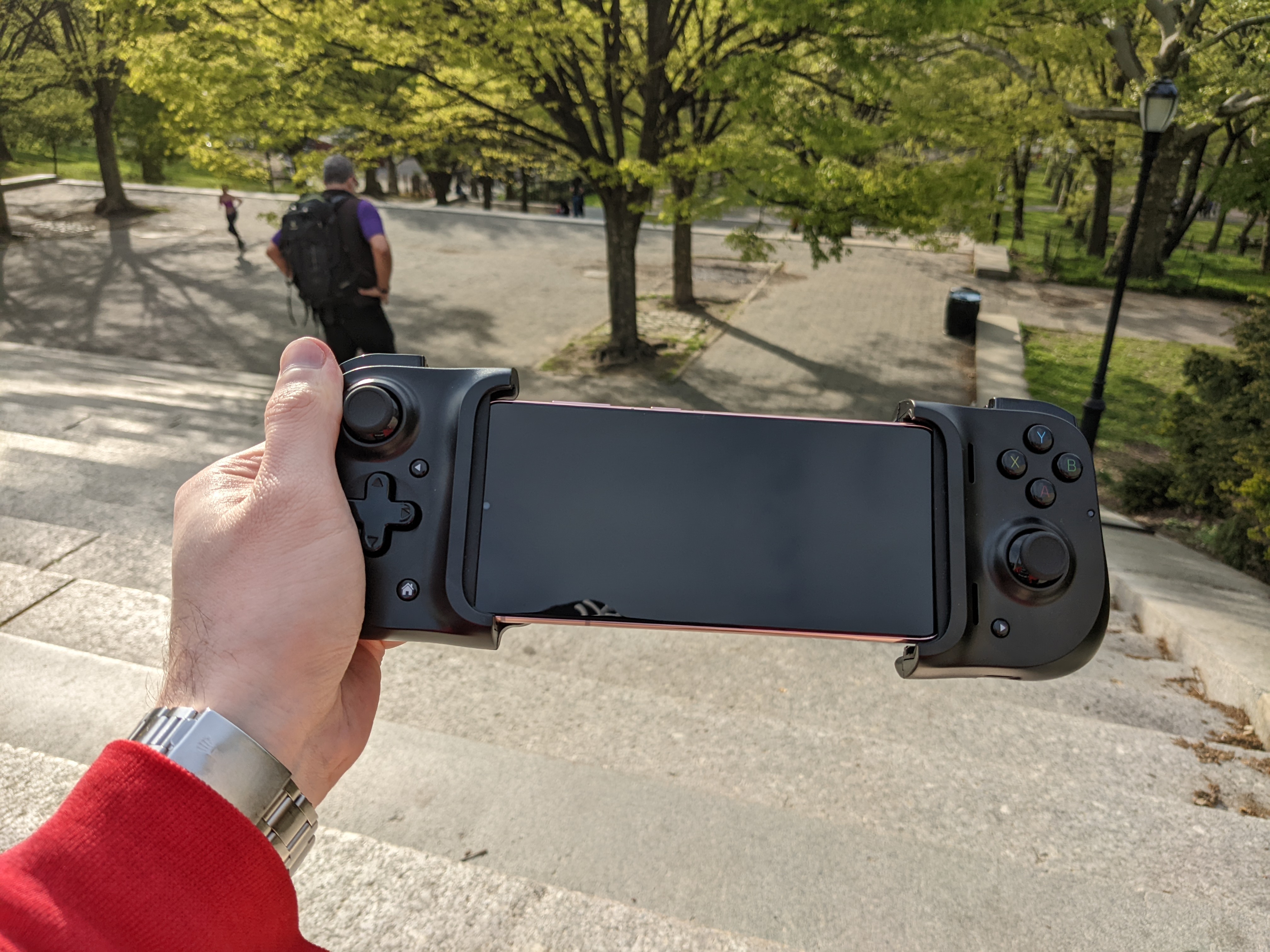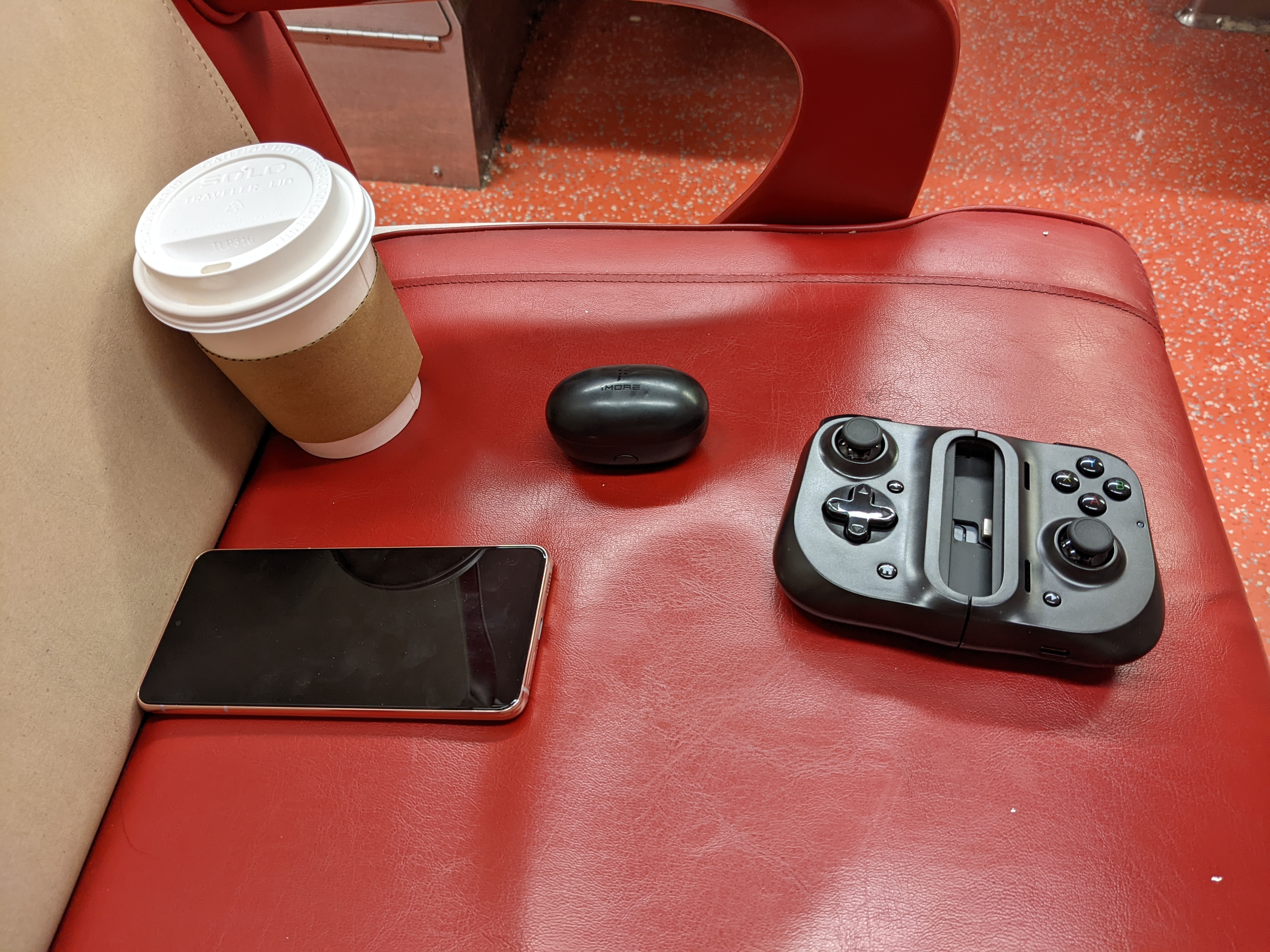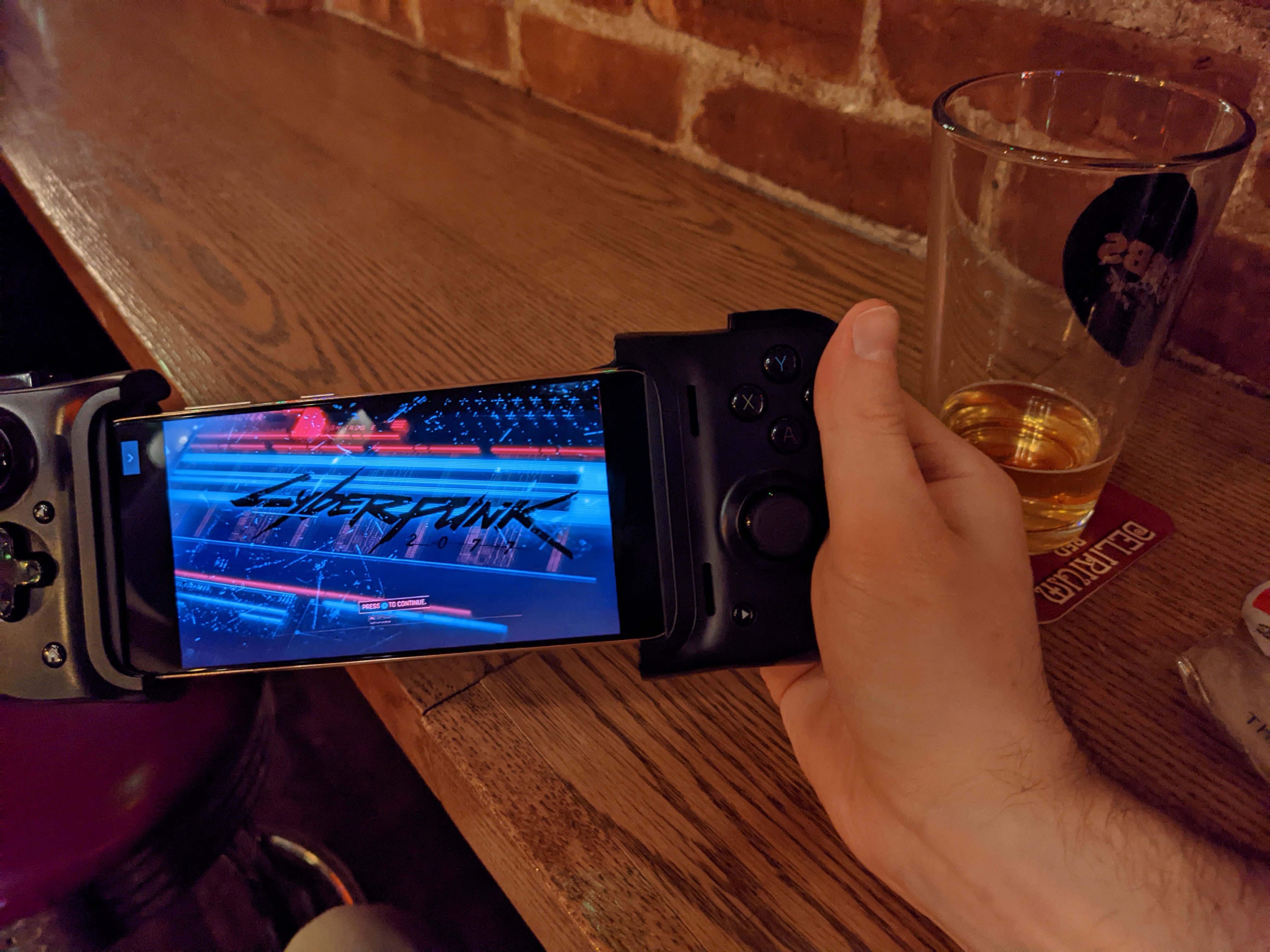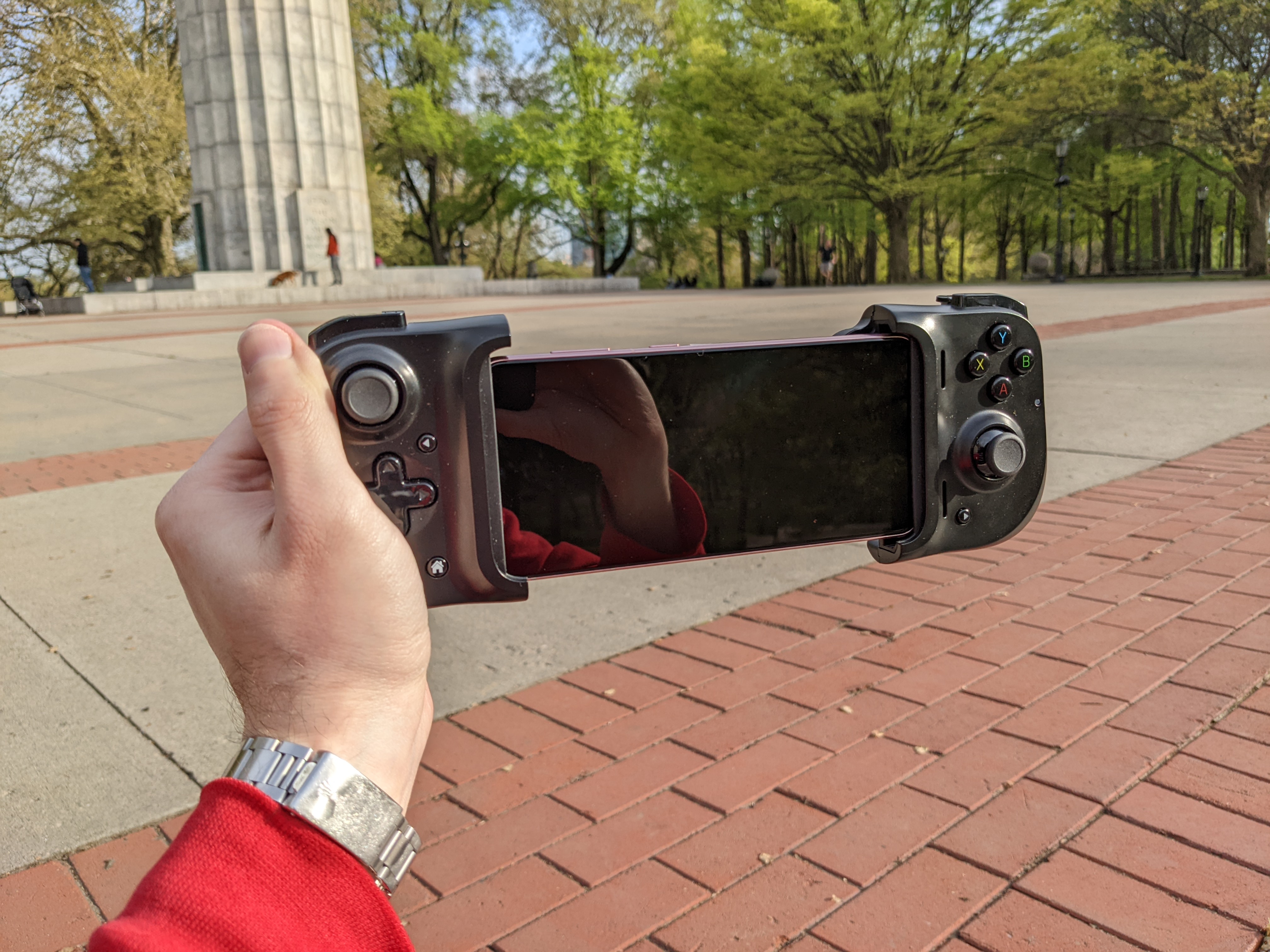I tried cloud gaming on my 5G smartphone — the good and bad
I tried to play my games on-the-go with a 5G smartphone. It was a mixed bag

The PS5 and Xbox Series X are as difficult to find as ever. It’s not much easier to get your hands on a GPU. In previous eras, this would have essentially put a kibosh on gaming. Without a console or a PC, you’d be better off watching TV, or reading a book, or going outside.
However, we live in an era of smartphones — and with smartphones, comes cloud gaming. The games you buy are no longer tied to a specific box in your living room. With services such as Xbox Game Pass and Nvidia GeForce Now, you can theoretically take your whole collection with you wherever you go. What’s more: You could build up an entire game library without ever buying a console or PC to go with it.
A few months ago, I wrote that cloud gaming has gotten good enough to potentially render consoles and PCs superfluous. To be clear, I don’t think the technology is perfect, but I do think that it’s reached a point where it’s good enough for everyday play, provided your connection is strong enough. Shortly after that, a representative from AT&T asked if I’d like to put my assertion to the test.
The experiment

The AT&T rep suggested that if I had so much faith in cloud gaming, I could give it a try on the company’s expansive 5G network. 5G, he argued, was strong and stable enough to meet cloud gaming’s demanding specifications. What’s more: AT&T customers get six free months of GeForce Now, suggesting that the mobile provider puts a lot of stock in 5G’s gaming capabilities.
To test how well 5G handled PC and console games, AT&T sent me a Samsung Galaxy S21 smartphone, a Razer Kishi controller and a SIM card with an unlimited 5G data plan. The company also upgraded my Nvidia GeForce Now account to a premium Priority tier, as opposed to the free tier I had been using. In theory, I could now hold the equivalent of a high-end gaming PC in my pocket, and take it with me wherever I went.
Where is 5G gaming beneficial?

I went into the experiment with high hopes, excited to play my favorite games wherever I went. But it wasn’t long before I ran into my first big issue with a 5G gaming smartphone: There weren’t that many opportunities to actually use it.
My weekday routine is admittedly pretty simple; I think it’s a fairly common one. In the morning, I get ready at home, then take a subway to work. I’m at the office for most of the day. In the evening, I’ll take the subway to another activity, or directly home.
Get instant access to breaking news, the hottest reviews, great deals and helpful tips.
Assuming your daily schedule is comparable, think long and hard about when you would actually need a smartphone capable of streaming PC or console games. If you want to game before work, you have access to your home setup. If you want to game during a break at work, you can use cloud gaming with a computer and a strong Wi-Fi connection. If you want to game after work, you’re back at home. Even if you need to share your PC or console setup with others, you can still game on a smartphone, just with Wi-Fi rather than 5G.
In fact, the only time where a 5G gaming smartphone would have come in handy was during my daily commute. There’s no signal underground, though, so it’s not practical for subway riders. And if you drive to work, you can’t play a game at the same time.
However, I realized that commuting could present a big opportunity — provided that you do it above ground.
Pains, trains and automobiles

I live in the northeastern United States, where every major city has its own flavor of commuter rail. These trains usually run above ground, and the trips can last 30-90 minutes, or more. It’s the ideal situation for a 5G gaming smartphone. You have enough time to sink into a game, but you don’t have a stable Wi-Fi connection.
After confirming my coverage with AT&T’s 5G map, I bought myself a roundtrip on the Metro North from New York to New Haven, CT. This trip takes about an hour and a half each way, and theoretically has 5G coverage the whole time. I hooked up the Kishi, signed into my GFN account, and waited for the fun to start.
The first problem I ran into was that you can’t simply play any game in your PC or console library. I was in the middle of Elden Ring when I ran this experiment, but that game isn’t part of GeForce Now. In fact, the only way to stream Elden Ring seems to be from one PC in your house to another one via Steam. I settled for Cyberpunk 2077 instead, figuring that an immersive single-player game would be a good way to pass the time.
Unfortunately, I didn’t get very far. Cyberpunk 2077 assumes that you’ll have a screen somewhere in the 20-80-inch range, rather than the Galaxy S21’s 6-inch display. The text was almost impossible to read, which is a recipe for disaster in a game that requires you to track quests, hack into sensitive files and follow along with subtitled dialogue.
I could have lived with the tiny text, but the performance was also highly variable. Even though I had a strong 5G signal for most of my ride, the game needed to constantly buffer, inundating me with low-resolution textures, blurry characters, jerky performance and stuttering frame rates. The game flat-out froze a few times, which is a nightmare in a game that leans heavily into both driving and combat.
The AT&T rep had recommended that I try Apex Legends, Rocket League and Destiny 2, so I reasoned that perhaps Cyberpunk 2077 was just not optimized for streaming. I loaded up Apex Legends, and ran my way through the tutorial. The experience was a little smoother this time around. While the graphics were a little blurry, the performance was a little better, and the frame rate looked less like an animated flipbook. But seeing my targets on the tiny screen was almost impossible, particularly when they were far away (which was most of the time).
Rocket League and Destiny 2 presented similar difficulties. No matter how well they performed — which was sometimes “fine” and more often “with a lot of lag” — the screen size was always an issue. Console and PC game developers simply do not create characters models, backgrounds and text with smartphone screens in mind, and unless that changes within the next few years, 5G gaming is always going to face a potentially fatal stumbling block.
A few weeks later, I repeated the experiment on a 4.5-hour bus ride between Washington, D.C. and New York City. This time around, I tried the Xbox Game Pass app to see if it would fare any better than GeForce Now. I sank a few hours into Yakuza 5 Remastered, and I have to admit that I was actually able to make a little progress in the game. It synced my save files from home perfectly, and it was a game I really wanted to play, rather than a game I simply brought along to pass the time. But the small screen, laggy performance and occasional loss of signal eventually made the whole experience intolerable, and I decided to read a book instead.
A night at the pub

I racked my brains to come up with a few more everyday scenarios where you might conceivably have a smartphone, no Wi-Fi and enough time to play an involved game. Eventually, I had a realization: 5G gaming wasn’t just there to pass the time. If the whole world was my entertainment center, then I didn’t have to game in my living room; I could do so anywhere. And so, naturally, I went to the pub.
This, I thought, could be the best of both worlds. Pubs, coffee shops, diners and the like are excellent places to sit and relax, where you can get out of the house for a few hours without spending a truckload of money. Some pubs offer Wi-Fi; some don’t. But they tend to be pretty slow connections with a lot of people vying for bandwidth. I bought myself a beer, pulled up a stool in the back, and loaded up Cyberpunk 2077 again.
Without a doubt, the pub was the best 5G gaming spot that I tested. It was relatively dark, so I could see the screen easily. I wasn’t moving, so the 5G connection was extremely consistent. I could stay as long as I wanted, so having to quickly disassemble the Kishi or find a save spot wasn’t a concern. Even so, it was something of a mixed experience.
At the pub, I didn’t encounter the same lag and frame rate issues that I had on the train. But my environs still couldn’t change the tiny screen, or the fact that the fact that I couldn’t play the exact games that I wanted. While I was happy for the change of scenery, I couldn’t shake the feeling that I might have been happier at home, with a pack of craft beer and a big TV.
A day at the park

Finally, I realized that 5G could facilitate gaming’s last great frontier: the outdoors. Growing up, I’m sure I’m not the only person whose parents exhorted me to put down the controller and go play outside. Wouldn’t it be wonderful, I reasoned, if I could finally combine these two cherished activities?
I packed up my phone and my Kishi and hopped a subway to one of NYC’s 1,700+ public parks. I picked a bright, balmy day, with just enough cloud cover to be comfortable, and no chance of rain. Upon arriving at the park, I scouted out the perfect spot: sunny enough to be warm, shady enough to see my screen and with enough back support to sit comfortably for a while.
Testing in the park was my most disappointing 5G experience, if only because I honestly expected much better. Even though I was sitting in a stationary spot with perfect 5G coverage, my games lagged and stuttered just as they had on the train. Even in the shade, with the screen brightness turned all the way up, the games were difficult to see. I lasted only about 10 minutes before I packed up and headed inside.
To be fair, I’m sure that some areas of the park would have offered a more stable connection, or shadier trees, or some combination of perfect conditions for 5G gaming. But it would take an awful lot of work to find them — especially considering that you’re not exactly a captive audience in a park, as you are on a train or bus. It’s easy enough to just go somewhere else with a strong Wi-Fi signal.
Too many caveats

All told, I had my 5G gaming smartphone for about a month. During that time, I didn’t find myself in many organic situations where it came in handy. When I engineered situations for myself, the performance was often disappointing. And even under ideal conditions, many PC and console games are almost unplayable on a six-inch screen. Until developers adopt mobile streaming on a wide scale and add a dedicated “smartphone mode” for every game, 5G gaming is going to face an uphill battle. To be clear, I think this could absolutely happen someday. But today is not that day.
Even then, you have to jump through an awful lot of hoops to facilitate a 5G gaming setup at all. In my testing, cloud gaming chewed through about 1 GB of data per hour, so a high-end unlimited data plan is a necessity. At AT&T, this plan would cost $85 per month for a single line, on top of the $10 per month for GeForce Now Priority or $15 per month for Xbox Game Pass Ultimate. A Razer Kishi costs $100. You could conceivably spend much more on a 5G gaming setup than on a console or PC.
Thinking back on the whole experience, though, there was one thought that kept popping into my head each time I tested: “I wish I had my Nintendo Switch instead.” The Switch isn’t an especially powerful console, and it goes through long dry spells between must-have games. But it doesn’t require an Internet connection, and most of its games feel optimized for its small screen. You could argue that 5G gaming is still more convenient, as you almost always have your smartphone on your person. But once you factor in carrying around the Razer Kishi, you may as well just stash a Switch in your bag instead.
As handheld PCs such as the Steam Deck gain prominence, I wonder whether cloud gaming on mobile phones will be the wave of the future, after all. As it stands, 5G gaming can be fun in short bursts, and these growing pains are inevitable in a technology that’s made such great strides in such a short amount of time. But unless developers and publishers get serious about cloud gaming on mobile platforms, there’s no immediate reason why gamers should, either.

Marshall Honorof was a senior editor for Tom's Guide, overseeing the site's coverage of gaming hardware and software. He comes from a science writing background, having studied paleomammalogy, biological anthropology, and the history of science and technology. After hours, you can find him practicing taekwondo or doing deep dives on classic sci-fi.
